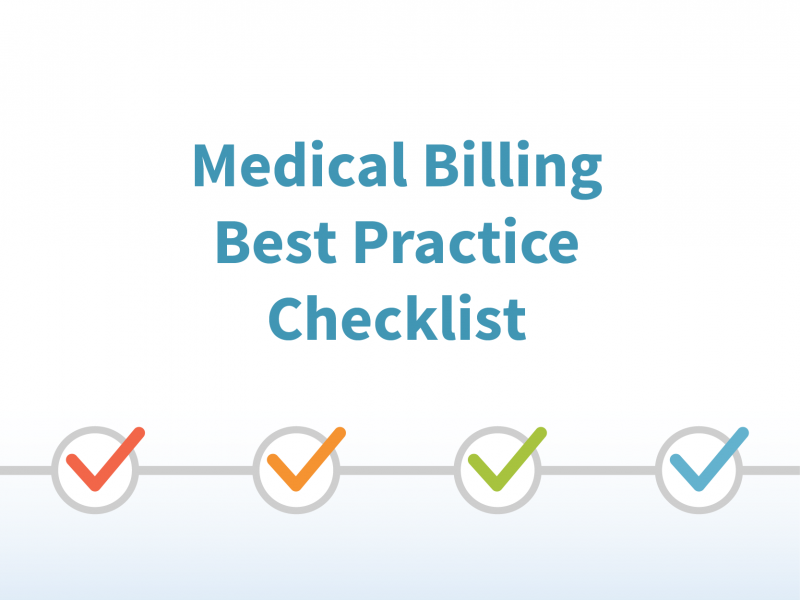5 Steps to Lower Your Practice’s Denial Rate
 Claim denial management is an ugly reality that many practices face daily. Now that the industry has transitioned to ICD-10, the potential for denials continues to increase. However, the good news is that many of these denials are avoidable. There’s no need to settle for a 10% or higher denial rate. With a little time and effort, practices can easily reduce their overall denial rate to the industry standard of 3%-5%.
Claim denial management is an ugly reality that many practices face daily. Now that the industry has transitioned to ICD-10, the potential for denials continues to increase. However, the good news is that many of these denials are avoidable. There’s no need to settle for a 10% or higher denial rate. With a little time and effort, practices can easily reduce their overall denial rate to the industry standard of 3%-5%.Why is it particularly important to monitor and mitigate denials now if you haven’t done so already?
First, payers have increased the sophistication of their algorithms so they can identify patterns of denials more easily. Second, denials are costly. It often takes significant time and resources to resolve and/or appeal denials. Finally, ignoring denials today will inevitably lead to problems down the road. Although denials in ICD-10 continue to remain relatively low (CMS denied a total of 9.9% of claims during the fourth quarter 2015), there is the potential for an increase once the ICD-10 grace period concludes and the ICD-10 partial code freeze is lifted—both set to occur on October 1, 2016. At the ICD-10 Coordination and Maintenance Committee meeting, March 9-10, 2016, stakeholders proposed 1,900 code changes to ICD-10-CM and several last-minute changes to the ICD-10-PCS code set, which already has 3,651 new codes approved for October 1, 2016 implementation.
Here are five steps to improve your denial management process and lower your denial rate and implement proactive strategies to ensure smooth cash flow.
1. Know your current denial rate. To calculate your current denial rate, add the total dollar amount of claims denied by payers within a given period, and divide that amount by the total dollar amount of claims submitted within the given period. For example, look at a three-month period. If your total dollar amount of claims denied within this period is $10,000—and your total dollar amount of claims submitted is $100,000—then your denial rate is 10%.
Calculate your denial rate according to payer, reason for denial, provider, specialty, and location (if your practice includes more than one location).
2. Identify the major reasons for your denials. These reasons will vary by specialty and by practice. Start by compiling your claim adjustment reason codes. Though these codes may be somewhat cryptic as well as inconsistent across payers, they at least provide a foundation on which you can build denial management best practices and strategies. Map these codes to more actionable descriptors so you can dig into your data at a more granular level and identify the root cause of the problem. For example, consider categorizing denials according to these common reasons:
- Claim not submitted within timely filing guidelines
- Demographic errors (e.g., wrong spelling of the patient’s name or wrong date of birth)
- Duplicate claim
- Eligibility expired
- Global charges were billed when only the professional or technical component should have been billed
- Incorrect insurer address
- Incorrect modifier
- Invalid procedure and/or diagnosis code
- Lack of medical necessity
- No referral/authorization
- No supporting documentation
- Payer requires additional information from the patient
- Provider not permitted to see the patient under the plan
- Service not covered
- Wrong insurer billed
- Serve as a resource to clarify code combinations, claim rejection codes, definitions of modifiers, documentation requirements, and more
- Validate codes that the physician chooses in the EHR
- Note discrepancies between procedures documented and supplies ordered but not billed
- Find missed charges based on progress note documentation
- Collect data regarding denials. How are denials identified? Verify your ability to extract this data from your practice management system, or secure a bolt-on denial reporting product.
- Review data to identify trends. Can the practice use automation to route denied claims directly to specific work lists? For example, route all coding-related denials directly to the coder
- Create a standardized workflow for denials. This should include a step-by-step action plan for each type of denial. Who will handle each type of denial, and how?
- Accurate data entry. Collecting accurate and complete demographic and insurance information on the front-end is critical. One of the most common denials occurs when a patient’s health insurance expires and either the patient or the practice (or both) are unaware. In other cases, practices may conduct eligibility checks when an appointment is made, but coverage is dropped before the actual visit occurs. Real-time eligibility tools that provide information about coverage, deductibles, copayments, and contractual fees for specific services and procedures are helpful.
- Policies and procedures for insurance coverage and eligibility (e.g., payer-specific requirements regarding appropriate ICD-10 codes to use with certain CPT/HCPCS codes). Consider designating one person to receive and review all newsletters and updates from payers. This person can then disseminate important information to the rest of the team.
- Documentation requirements for ICD-10 specificity. Depending on your specialty, ICD-10 codes may require more specific documentation regarding laterality, anatomical location, and more.
- Frequency/global rules for specific procedures. This should include a discussion of modifier usage.
- Advanced Beneficiary Notices. Education should include how to fill out forms properly and what patients need to know at the time of service.
If you are looking for ways to improve you medical billing, use this Billing Best Practice Checklist to establish goals for best practices. In fact, we think your rejections and denials have a lot to tell you.




















